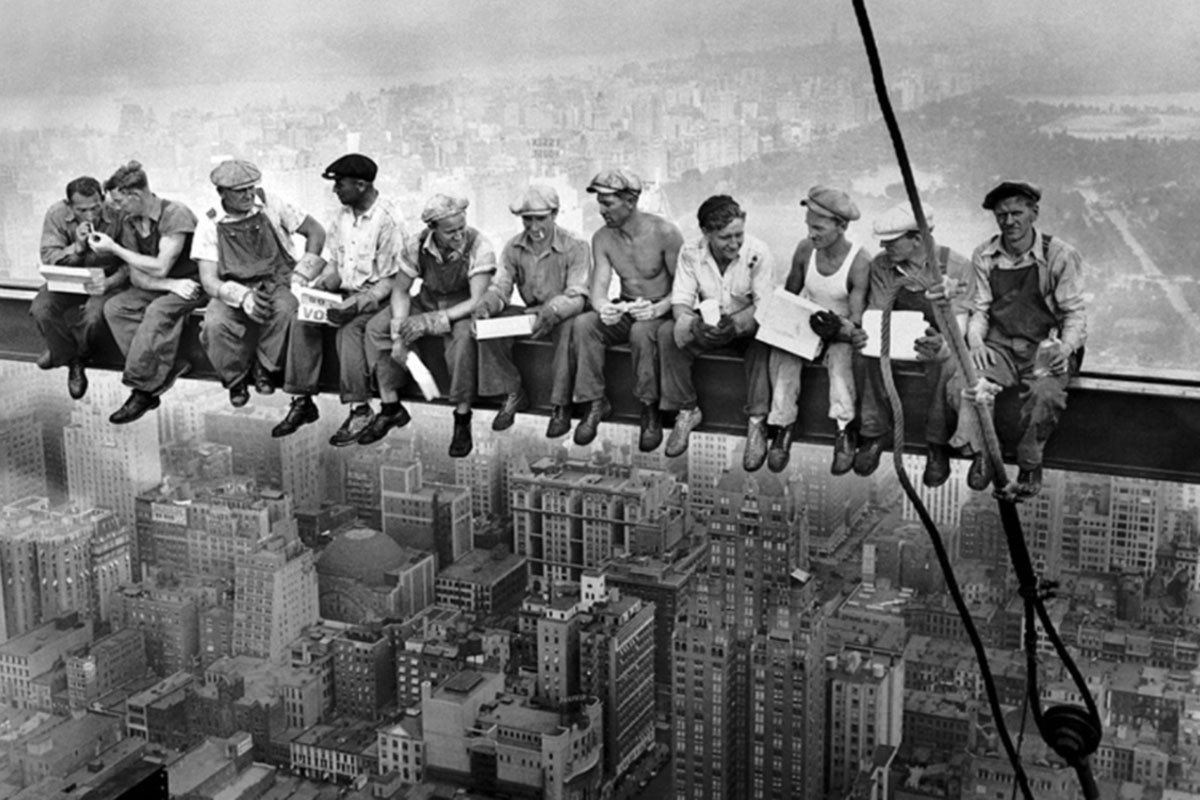.
Has Health and Safety gone mad?
Has Health and Safety gone mad? That was certainly the message from Amanda Spielman, Ofsted’s Chief Inspector, in a recent article about the safety culture in schools.
Ms Spielman said that, in her opinion, some of the measures that school staff go to, to keep children safe, are ‘simply barmy.’ From the examples she gave, we have to agree. It does seem daft to say no-no to a yo-yo, just as it is bonkers to ban conkers!
The Chief Inspector wrote that she had seen children on school trips, wearing hi-vis jackets, who ‘looked like troupes of tiny construction workers – minus the hard hats.’ Acknowledging the part that Ofsted has played in making schools overly cautious, Ms Spielman has called for school leaders to ‘make decisions based on their experienced judgement.’ At the same time, the education watchdog will be providing training which ‘will remind inspectors what safeguarding is really all about.’ All of this in the hope that, the next time Ms Spielman sees children on a school trip, ‘fewer of them will be auditioning for Bob the Builder.’
One of the first invaluable training sessions that newly appointed Head Teachers are advised to go on, is a one day Health and Safety course. Often, they are accompanied by their Chair of Governors, or a member of the Governing Body’s Health and Safety Committee. Throughout the day, a range of worst-case scenarios are presented; film clips to emphasise each point are shown; what you should do if the Health and Safety Executive (HSE) turns up on your doorstep is explained and, on a five minutely basis, the words, ‘If this happens, you could go to prison,’ are used.
Leaving the session ashen faced, Heads around the country dash to the nearest supermarket to buy an industrial sized roll of cotton wool and a load of sticky tape – determined to wrap every pupil up on their return to school the next day. They check their contract, wondering if it’s too late to change their mind about Headship and, when they realise that it is, they pick up their long list of jobs and leg it round the school, like their freedom depends on it. Which, they now believe, it does.
‘If it moves, or if it doesn’t, has it got a risk assessment? Are the pipes flushed out regularly to avoid Legionnaires’ disease? Has the playground equipment been checked in the past year? Do the children wear shin pads when they go to a sporting event? Do they wear shin pads when they sing in the choir (just in case)? And WHO SAID THEY COULD PLAY CONKERS!?’
It is at this, slightly manic, point that a deep breath and a large dose of perspective is required. In January 2016, the Department for Education reported that there was a total of 8.56 million pupils in schools in England, on a daily basis. In comparison, the number of serious accidents and deaths in schools, or on school trips, is minute.
Unfortunately though, some accidents will happen. They can happen in the home, in the garden, on the road, in water, at a soft play centre, in a restaurant, on stairs or in the park, as well as at school. In fact, the Royal Society for the Prevention of Accidents (RoSPA) states that the largest number of accidents involving children happen in the living/ dining room, and that the most common times for accidents are between late afternoon and early evening, in the summer, during school holidays and at weekends. For anyone reading this, who has just decided to ban their child from being in the living room, between 4pm and 6pm on a Saturday or Sunday ‘for their own good,’ STOP! As we said, accidents will and do happen, but it hinders rather than helps children to be over-protected.
It is widely acknowledged that children are now given fewer opportunities to be outdoors and engage in ‘risky play’ than previous generations, due to parental and societal concerns. In particular, people worry about traffic-related dangers (which are borne out by statistics) and abductions by strangers (which are extremely rare). Instead of putting their children ‘at risk’ on the streets, it has been preferable for parents to believe that they are safer indoors – where an increased number are leading sedentary lives in front of screens.
Of course, it is not just in the real world that there are potential dangers. In the online and virtual worlds, there are many computer-generated potholes which children can fall into. As adults, we do need to take all sensible measures to keep children safe when they are searching the internet, gaming, in chat rooms, or using social media, however we can’t possibly protect them 24/7. So, what can we do?
The benefits of allowing, and encouraging, youngsters to engage in free and risky play, push their limits and challenge themselves, both physically and mentally, far outweigh the harm that creating risk-adverse children will cause.
Taking risks can have positive implications for children’s overall health and happiness, as well as their developmental, social and emotional needs. Susa and Benedict (in Ball, 2002) state that, ‘Risk taking is considered to have further benefits, which contribute to the development of desirable personality traits, including creativity.’ And Dweck (2000) says that, ‘Encouraging children to enjoy challenges rather than to shy away from them could increase their persistence and learning abilities.’
Eager and Little (2011) argue that, when risk is removed from play and restrictions are too high, a child becomes more prone to problems such as obesity, mental health concerns, lack of independence, and a decrease in learning, perception and judgment skills.
The winner of the 2016 Laughology Award for Happiest Head Teacher particularly impressed the judges as Jane Thomas’ school, St Matthew’s Primary in Luton, has created an alternative curriculum which includes climbing trees, rolling down hills and getting dirty by making mud pies.
Jane says that: ‘My yardstick is reducing risks to those commensurate with everyday living....everyday childhood.
Schools are vulnerable to the complaint and litigation culture, where every childhood accident resulting in a bump, bruise, scratch or cut, sprained, fractured or broken limb or property damage (a torn hood or a broken yo-yo) is seen as the school's fault, resulting in time-consuming parental complaints or, at worst, a legal claim for compensation. This may inhibit some colleagues from being adventurous, messy, active and creative in their delivery of the curriculum.
I am sure there are occasions where more considered risk assessing may have prevented such incidences and these are worthy of reviews of health and safety procedures and risk assessments, but many are the result of ordinary childhood activity and playfulness and if school leaders are confident in their levels of care and supervision, risk assessing protocols and compliance, such activities can and should be enjoyed.
Mud washes off, water dries, grazes heal, sand can be swept up, there are clothes for all occasions/conditions, responsibility for oneself is there to be taken.....what's the worst that can happen? Think about it, plan for it, do it. These are important lessons they need to learn.’
As Jane and the staff of St Matthew’s clearly agree, it is our moral duty to provide opportunities for children and young people to put themselves outside of their comfort zone; develop a can-do, positive attitude to new and tricky activities and situations and to have a go, and learn from their mistakes. These skills will all serve them well in childhood, and into adulthood, where it is said that fortune favours the brave.
Whether we are considering the physical or virtual world, our duty of care – be we parents or school staff in an in loco parentis role – is to make every effort to assess and address any real dangers that children may encounter. By trying to protect them from every possible, imagined risk we are, as Amanda Spielman says, ‘limiting their opportunity to fully take advantage of the freedom of childhood, and to explore the world around them.’ In its school and college safety advice, RoSPA recommends making schools: ‘as safe as necessary, not as safe as possible.’
It is vitally important that we enable children and young people to identify risks themselves and equip them with the knowledge, skills and understanding to manage and report these effectively, as the majority can, at an age appropriate level, when given the opportunity to practise. Children understand that not everything can be made safe, and they recognise the part that they need to play themselves in order to stay out of harm’s way. They know, from a young age, the personal level of risk at which they are comfortable and moderate their play accordingly. They also accept that their peers have different levels of comfort and ability (Sandseter, 2009).
The announcement from Ofsted that inspectors will take a more rational and reasoned approach to safeguarding and risk, will indeed go some way to enabling Heads, themselves, to make braver, riskier decisions. The type of parental response and support that school leaders receive when incidents and accidents do occur, may also have a bearing on their confidence to do what, deep down, they know is right. And it would help if, as a society, we didn’t threaten schools (workplaces, businesses and councils) with the slip and trip accident lawyers, as readily as their television adverts suggest we should.
Bearing all of the above in mind, when Amanda Spielman and her Bob the Builder-like pupils next ask, ‘Taking risks in schools - can we fix it?’ hopefully the answer will be, ‘Yes we can!’
























